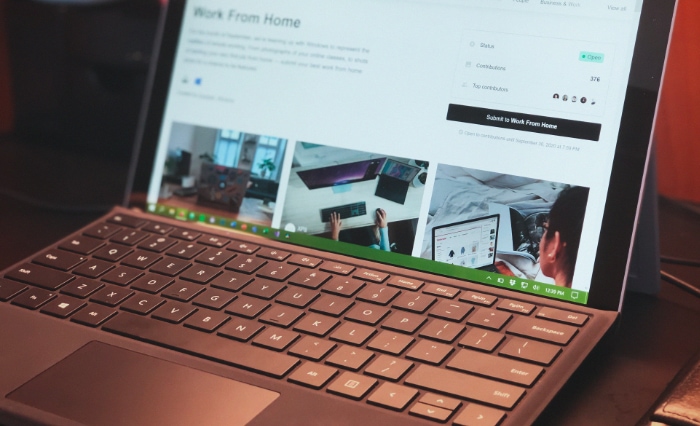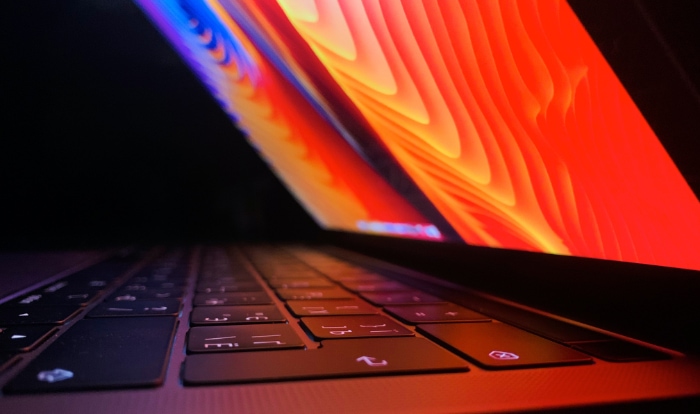The Scissor Switch Keyboard Explained

Keyboard technology may seem straightforward at first glance, but dive a little deeper and you'll find an array of designs, each with its unique characteristics and advantages. One such intriguing design that often generates curiosity is the scissor switch keyboard.
If you've ever wondered why your laptop keyboard feels different from a traditional desktop one or why some keyboards are remarkably quieter, you might be in for an enlightening read.
What Is a Scissor Switch?
When it comes to keyboard technology, the term “scissor switch” might prompt questions. Is it merely a design choice, or does it serve a functional purpose? To put it simply, a scissor switch is a specific type of keyboard mechanism that offers a unique set of benefits and limitations.
The Architecture of a Scissor Switch
A scissor switch consists of two intersecting plastic pieces that resemble the blades of a pair of scissors. These plastic pieces are positioned beneath each keycap. When a key is pressed, these intersecting pieces collapse toward each other, thereby activating the keypress.
It's important to note that the scissor mechanism is usually mounted on a membrane or dome switch, which is the actual electrical switch registering the keypress.
The Operational Principle
The scissor mechanism works by providing stability and a guided range of motion for each key. When a key is pressed, the scissor components collapse inward, pushing down on the underlying membrane or dome switch.
This action triggers an electrical circuit, thereby registering the keypress. One of the key aspects of this design is that it allows for shorter key travel—the distance a key moves when pressed—compared to other types of switches like mechanical switches.
Distinct Features
Short Key Travel
One of the most noticeable features of a scissor switch keyboard is its short key travel. The design allows for quicker keypresses, which can be advantageous for fast typists or for those who prefer a softer touch.
Quiet Operation
Scissor switch keyboards tend to operate quietly. Unlike mechanical switches, which often produce a distinctive ‘click' or ‘clack' sound, the scissor mechanism is designed to minimize noise. This is particularly beneficial in environments like offices or libraries where silence is valued.
Durability and Material
The materials used in scissor switches are often robust, contributing to a longer lifespan. High-quality plastics or even metal can be used in the construction, offering more durability than standard membrane switches but generally less than mechanical switches.
Ergonomic Design
The structure of scissor switch keyboards is often flatter and requires less force to activate keys. This leads to a comfortable typing experience, especially during extended periods of use.
Comparing Scissor Switch to Other Switch Types
Keyboards are far from one-size-fits-all. The varied tactile experiences and operational features they offer are primarily determined by the type of switch technology they employ.
Mechanical Switches
How Mechanical Switches Work
Mechanical switches operate on individual spring mechanisms under each key. When a key is pressed, the spring compresses, eventually triggering an electrical circuit and registering the keypress.
Key Travel and Actuation Force
Mechanical switches generally have a longer key travel and higher actuation force (the amount of force needed to register a keypress) compared to scissor switches. This makes for a more tactile typing experience, which some users prefer.
Sound Level
Mechanical keyboards are known for their audible click sounds. They can be loud and are often not suitable for environments where silence is a priority, unlike scissor switch keyboards which are much quieter.
Membrane Switches
How Membrane Switches Work
Membrane switches utilize a different approach. They consist of three layers: the top key layer, the middle membrane layer, and the bottom circuit layer. When a key is pressed, it pushes the membrane layer into the circuit layer, completing an electrical circuit and registering the keypress.
Responsiveness and Durability
In comparison to scissor switches, membrane keyboards are generally less responsive and offer less tactile feedback. They also tend to have a shorter lifespan, as the membrane layers can wear out faster.
Sound and Feel
Membrane keyboards are quieter than mechanical keyboards but usually not as quiet as scissor switch keyboards. They also offer less resistance, which can lead to a mushy typing experience for some users.
Summary of Differences
| Feature | Scissor Switch | Mechanical | Membrane |
|---|---|---|---|
| Key Travel | Short | Long | Medium |
| Actuation Force | Low to Medium | Medium to High | Low |
| Sound Level | Quiet | Loud | Moderate |
| Durability | High | Very High | Moderate |
| Cost | Moderate to High | High | Low to Moderate |
Advantages of Scissor Switch Keyboards

Selecting the right keyboard is often a matter of matching a set of features to specific user needs or preferences. Scissor switch keyboards come with their own unique benefits that can be particularly advantageous for certain applications.
Shorter Key Travel
When you press a key on a scissor switch keyboard, you'll notice that the distance the key moves is relatively short. This short key travel can make for quicker keystrokes, which is particularly beneficial for fast typists or those who prefer a more rapid input method.
Additionally, this can reduce finger fatigue during long typing sessions.
Quiet Operation
Scissor switch keyboards are known for their quiet performance. Because of the way the scissor mechanism is designed, the keys don't make much noise when pressed.
This makes scissor switch keyboards ideal for environments where silence or minimal noise levels are necessary, such as libraries, study rooms, or shared office spaces.
Durability
Scissor switch keyboards tend to be durable, often incorporating high-quality materials in their construction. Whether it's robust plastics or even metals, these materials contribute to the keyboard's longevity.
While not as durable as some mechanical options, scissor switch keyboards generally outlast membrane keyboards.
Ergonomic Benefits
The architecture of the scissor switch keyboard is typically flatter than other types, and the keys require less force to actuate. This can lead to a more comfortable typing experience, particularly for those who spend long hours at the keyboard.
Ergonomics are crucial in reducing the risk of strain injuries, and scissor switch keyboards often incorporate design elements aimed at supporting a more natural hand and wrist posture.
Low Maintenance
Unlike mechanical keyboards, which may require regular cleaning to remove debris that can affect performance, scissor switch keyboards are generally easier to maintain. Their construction often prevents dust and particles from entering the switch mechanism, making them more resistant to everyday wear and tear.
Disadvantages of Scissor Switch Keyboards
While scissor switch keyboards offer a range of advantages, it's important to consider their limitations as well. No keyboard type is perfect for every individual or setting.
Limited Tactile Feedback
One of the most commonly cited downsides is the lack of tactile feedback. Unlike mechanical keyboards, which provide a clear sense of actuation with a tactile bump or audible click, scissor switches offer a more subdued response.
For users who rely on tactile cues to know that a keystroke has registered, the absence of such feedback can be unsettling or unsatisfactory.
Higher Cost
Scissor switch keyboards often come at a higher price point compared to membrane keyboards. The cost is usually justified by better build quality and durability, but for users on a budget, this can be a significant drawback.
While they may not be as expensive as some high-end mechanical keyboards, they generally cost more than their membrane counterparts.
Repair Complexity
If a scissor switch fails or a key becomes unresponsive, repairs can be more complicated than with other types of keyboards. Unlike mechanical keyboards, where individual switches can be replaced, scissor switch keyboards often require the replacement of an entire section, or even the whole keyboard, to address a single faulty key.
Reduced Customization Options
Mechanical keyboards offer a wealth of customization options, from switch types to keycaps, allowing users to tailor their keyboard to their exact preferences. Scissor switch keyboards, on the other hand, are generally less customizable.
Users are mostly confined to the original configuration, with fewer options for personal adjustments.
Moderate Lifespan
Although scissor switch keyboards are durable, their lifespan falls somewhere between that of mechanical and membrane keyboards. A scissor switch can withstand tens of millions of keystrokes, but it may still wear out faster than a mechanical switch, which can often handle upwards of 50 million keystrokes.
Conclusion
Choosing the right keyboard can be a nuanced decision, shaped by various factors ranging from tactile preferences to specific usage scenarios. Scissor switch keyboards carve out their own niche in this landscape, offering a blend of features that make them suitable for a multitude of applications.
With advantages like short key travel, quiet operation, and ergonomic design, they meet the needs of users who prioritize speed, silence, and comfort. However, they are not without their drawbacks, such as limited tactile feedback and a generally higher cost compared to membrane keyboards.
Weighing these pros and cons can guide potential buyers to a more informed choice that aligns with their needs. Whether you are a fast typist looking for a keyboard that keeps up with your pace, or you're in need of a quieter option for a shared workspace, scissor switch keyboards present a compelling set of attributes worth considering.


